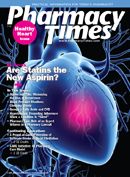Publication
Article
Pharmacy Times
Drug Diversion and Abuse: Priorities in the Fight Against Rx Abuse
Author(s):
Combating prescription drug abuse, while remembering that the vast majority of clients are legitimate patients, should be a priority in 2010.
John Burke, commander of the Warren County, Ohio, drug task force and retired commander of the Cincinnati Police Pharmaceutical Diversion Squad, is a 40-year veteran of law enforcement. Cmdr Burke also is the current president of the National Association of Drug Diversion Investigators. For information, he can be reached by e-mail at burke@choice. net, via the Web site www.rxdiversion. com, or by phone at 513-336-0070.
The year of 2009 is almost a memory, as we look back and wonder how well we all did in the fight against prescription drug abuse and diversion. Pharmaceutical companies continue to try to find a way to make pain medications as efficient as ever, while making them more difficult to abuse. A few new products received FDA approval in the latter part of 2009, while others wait and hope that 2010 will be their year.

Hydrocodone products continue to be the number-1 prescription drug of abuse in the United States. Of course, it is also one of the most prescribed pharmaceuticals—one of the big factors that you can count on when controlled substance pharmaceuticals are abused. Street values fluctuate from $4 to $8 a pill, depending on strength, and in which area of the country you are located. Hydrocodone is virtually always abused orally and intact. Only a few reports of snorting the drug have ever been reported.
Oxycodone products are solidly in second place in terms of abuse, and may only be in second place because of the fact that they are a CII substance, with the added controls having some bearing on not overtaking hydrocodone. The immediate-release oxycodone averages from $6 to $8 per tablet, with most of it taken orally, but some of it consumed through injection.
Oxycodone extended-release tablets are usually very close to the $1/mg street value levels—sometimes as much as $1.50/mg in certain areas of the United States. Those addicted to the pain medication have methods to remove the oxycodone from the small tablets, making them available to crush and snort or inject. The addict may also use a more basic diversion, which is somewhat effective, by merely chewing them up and swallowing. This of course is nothing new, with companies working hard on attempting to make oxycodone a much more difficult product to divert.
I feel that alprazolam, the nation’s most preferred benzodiazepine for abuse, is the third most abused and diverted prescription drug in America. Alprazolam is easily sold in its highest strengths for $3 to $4 per pill. In our area in southwest Ohio, this drug can be sold to an extensive group of abusers who may be involved in the diversion of licit as well as illicit substances. The fact that alprazolam apparently moves through the bloodstream more quickly than others in this class accounts for its popularity.
The abuse of these pharmaceuticals and others is nothing new of course, as the street values stay strong along with the demand. We are starting to see studies that may indicate prescription drug abuse is falling slightly, however. Unfortunately this does not mean that it is going away any time soon, but the increased education may be having some effect, however small.
Michael Jackson has been the latest celebrity highlighted in the news on prescription drug abuse, and, as this is written, his death still has no finality. Although his death has been attributed to a prescription overdose, no official finding as to his cause of death has been declared by the coroner. With all of the concern over controlled substances, it was ironic that a noncontrolled substance actually took his life.
Some concern has arisen that, in this state of economy where money becomes very tight, more of those dependent or addicted to drugs will turn to pharmaceuticals. The theory is that insurance programs, whether public or private, will be even more ravaged by those needing their next “high,” with insurance being a cheap way to obtain their drugs of choice.
Only time will tell as we work our way into 2010 whether we will make a bigger dent in drug diversion. Let’s continue to try to combat this problem of prescription drug abuse, while we remember that the vast majority of your clients are legitimate patients, many of whom rely on these products to function on a daily basis. We all need to be ever vigilant that we do not disrupt the supply for these individuals while we deal with the serious problem of prescription drug abuse.
I wish you a very sincere Happy New Year! â–







